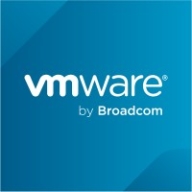

Broadcom DX Application Performance Management and VMware Aria Operations for Applications compete in the application performance monitoring category. VMware Aria Operations for Applications appears to have the upper hand due to its support for modern architectures, advanced features, and higher-rated customer support.
Features: Broadcom DX Application Performance Management includes Transaction Tracing, end-user experience monitoring, and integration capabilities for comprehensive performance issue diagnosis. VMware Aria Operations for Applications offers strong integration with open-source technologies, Kubernetes support, and effective clustering and troubleshooting tools.
Room for Improvement: Broadcom users highlight high costs, limited cloud support, complex configurations, and a need for better programming language support. VMware users seek an easier setup process, better integration with existing systems, and price reductions. Both products could enhance AI-driven diagnostics and deployment processes.
Ease of Deployment and Customer Service: Broadcom is accessible across various deployment models but could improve in ease of configuration and cloud support, with moderate customer service ratings. VMware shares similar deployment flexibility but is noted for expensive and complicated setup, though technical support is highly rated, indicating greater effectiveness.
Pricing and ROI: Broadcom is considered costly, with potentially expensive licensing models. However, it provides benefits like reduced incident resolution and improved application efficiency. VMware also presents high licensing costs but consolidates many functions on one platform, offering potential ROI despite pricing concerns.
| Product | Market Share (%) |
|---|---|
| VMware Aria Operations for Applications | 1.2% |
| Broadcom DX Application Performance Management | 0.8% |
| Other | 98.0% |
| Company Size | Count |
|---|---|
| Small Business | 26 |
| Midsize Enterprise | 24 |
| Large Enterprise | 124 |
| Company Size | Count |
|---|---|
| Small Business | 4 |
| Midsize Enterprise | 1 |
| Large Enterprise | 10 |
Broadcom DX Application Performance Management is a cutting-edge next-generation APM that goes beyond the traditional aspects of what other APMs provide by offering fully integrated AIOPS (Artificial Intelligence for IT Operations) capabilities embedded in the solution. This enables Broadcom DX Application Performance Management better opportunities to detect anomalies faster, correctly anticipate behavior, and perform intuitive automatic corrective processes. The solution is able to provide comprehensive full stack end-to-end monitoring and deliver complete visibility and a nearly flawless user experience.
Broadcom DX Application Performance Management Benefits
Broadcom DX Application Performance Management has many valuable key features. Some of its most useful features include:
Broadcom DX Application Performance Management Features
There are many benefits to implementing Broadcom DX Application Performance Management. Some of the biggest advantages the solution offers include:
Reviews from Real Users
“The most valuable feature of Broadcom DX Application Performance Management for me is transaction monitoring. “ A Peerspot user who is an Applications Engineer at a financial services firm.
“The most valuable features are the low overhead, the ability to monitor production on 24/7 principle, the ability to decrease time to discover the point of failure in the IT infrastructure or the application environment in a short period of time, reporting for analyzing the performance of the application for improving the code optimizing process.” A.Jurisic, CEO at Pio Pet d.o.o.
“What is most valuable about this solution is that it completely monitors code-level visibility. We benefit from this as we're able to capture any performance issues from an application, then raise and forward those issues to the applicable team more quickly.” S. Doddi, APM consultant at Tech Mahindra Limited
VMware Tanzu Observability by Wavefront is a powerful tool for monitoring and analyzing the performance and availability of applications and infrastructure in real-time.
With its comprehensive monitoring capabilities, visualizing and analyzing data becomes effortless. The real-time alerting system ensures timely issue resolution, while scalability and a user-friendly interface provide a seamless experience for smooth operations.
We monitor all Application Performance Monitoring (APM) and Observability reviews to prevent fraudulent reviews and keep review quality high. We do not post reviews by company employees or direct competitors. We validate each review for authenticity via cross-reference with LinkedIn, and personal follow-up with the reviewer when necessary.